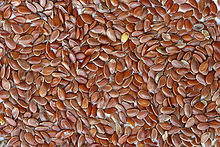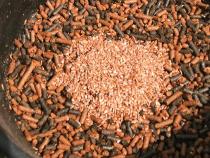 So what is flaxseed? Flaxseed is also known as flax or linseed. It comes from the flax plant and is grown in cool northern climates. In the United States North Dakota and Montana are the largest growers. Canada is the Number 1 producer of flaxseed. It is of great nutritional value. It contains an average of 40% fat and is one of the few vegetable sources of omega-3 fatty acids (mainly alpha-linolenic acid). Flaxseed also contains around 30% highly digestible fiber and 20% protein. When feeding it to your horse care must be taken in what form. Its use can have many benefits.
So what is flaxseed? Flaxseed is also known as flax or linseed. It comes from the flax plant and is grown in cool northern climates. In the United States North Dakota and Montana are the largest growers. Canada is the Number 1 producer of flaxseed. It is of great nutritional value. It contains an average of 40% fat and is one of the few vegetable sources of omega-3 fatty acids (mainly alpha-linolenic acid). Flaxseed also contains around 30% highly digestible fiber and 20% protein. When feeding it to your horse care must be taken in what form. Its use can have many benefits.
Flaxseed and Horses
- When feeding your horse use a stableized flaxseed or ground flaxseed to increase nutrientional value. The form is more digestable and prevents rancidity.
- Do not soak or boil as that reduces the nutritional value.
- Research indicates that the use of flaxseed in horses adds fat to a horse's diet, improves skin, hair coat, and body condition and reduces excitability.
- "Research in equids suggests adding one pound of milled flaxseed per day can reduce the allergic response to recurrent seasonal pruritis, or sweet itch."
- The omega-3s in flax could have beneficial effects for horses suffering from inflammatory diseases such as heaves, osteoarthritis, Developmental Orthopedic Disease (DOD), Laminitis, Navicular, Coffin bone rotation, Ringbone and Sidebone, Tendon, ligament and soft-tissue damage, Hock, and Stifle.
 It is suggested that flax should be introduced gradually into your horse's diet as with any feeding change. A three to five day period often is the recommendation. This allows for the horse's digestive system to adapt to the added fat. Your horse's diet needs to be balanced as flaxseed has an inverse calcium to phosphorous ration. Always check with your vet before making any changes in your horse's diet. Special care has to be taken. Also, you must know how much flax to feed as every horse's situation is unique. It is not a one fits all plan.
It is suggested that flax should be introduced gradually into your horse's diet as with any feeding change. A three to five day period often is the recommendation. This allows for the horse's digestive system to adapt to the added fat. Your horse's diet needs to be balanced as flaxseed has an inverse calcium to phosphorous ration. Always check with your vet before making any changes in your horse's diet. Special care has to be taken. Also, you must know how much flax to feed as every horse's situation is unique. It is not a one fits all plan.
For More Information:
Feeding FlaxseedFlaxseed

